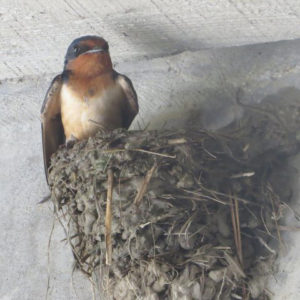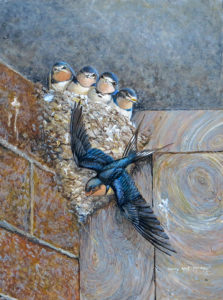As reported in the media, there are abandoned horse stables within a wildlife refuge in Hadley, Maine. Within those stables there have been recorded some 37 nests of barn swallows, which are causing quite the uproar between animal welfare activists and local authorities. A couple of years ago I drove from my home near Toronto, Ontario, to Ottawa (about 270 miles) in summer and saw just two barn swallows. I had made that drive decades earlier, at the same time of year, and had seen hundreds, if not thousands. They had gone from being a very common species to being listed as officially “threatened” in 2012, as defined in Ontario’s legislation. That means that they are a species that is “…not endangered, but is likely to become endangered if steps are not taken to address factors threatening it.”

Those factors listed in the legislation are poorly understood, yes, but loss of food (flying insects) and nesting space are invariably named as contributing to this precipitous wane in barn swallow population size, with a 65 percent decline in the species in Ontario between 1966 and 2009, according to the study that triggered the placement of the species on our provincial Endangered Species Act.
The issue at the reserve is complicated. Put simply, a group of volunteers, some of whom have put a great deal of effort and money into the project, are trying to save the stables from demolition to protect vital nesting habitat. Barn swallows (and several other swallow species) have come to depend on artificial structures for nesting sites. Barn swallows preferentially place their nests in places like sheds, boathouses, garages, bridges, and, especially, barns (hence their name). Historically, they nested mostly in caves and the recesses of cliff faces. Even Audubon (1785-1851) painted the species nesting on a wooden beam.

The volunteers, Friends of Fort River, have been stymied by recalcitrant authorities who want the structure torn down. Whatever rules, regulations, or orders that might govern the decision preventing citizens from restoring the stables to the point where the swallow nesting colony therein could survive, the government’s intransigence reflects, perhaps ironically, our own lack of adaptability; we are well on our way to being another species lost to extinction.
The fate of these barn swallows illustrates, at a micro level, why we may well destroy our own species as we enter what is now being called the Anthropocene and the sixth major extinction event the earth has endured. Each of the five previous extinctions saw the loss of many, even most, of the world’s species, including the most dominant of their respective eras. Following each such events, it has taken tens of millions of years for the number of species to build back up to prior levels, but with new species; the species that were lost are gone forever. An inability to adapt to rapid change causes extinctions and we humans are the agents of just such rapid change. At the national level in Canada the barn swallow is also threatened and it is no better off across the border in Maine. If we can’t do what needs to be done when what needs to be done is both understood, and can be accomplished by willing volunteers, what hope is there as we enter this new period of mass extinction?
Keep Wildlife in the Wild,
Barry

 Dear Reader,
Dear Reader,